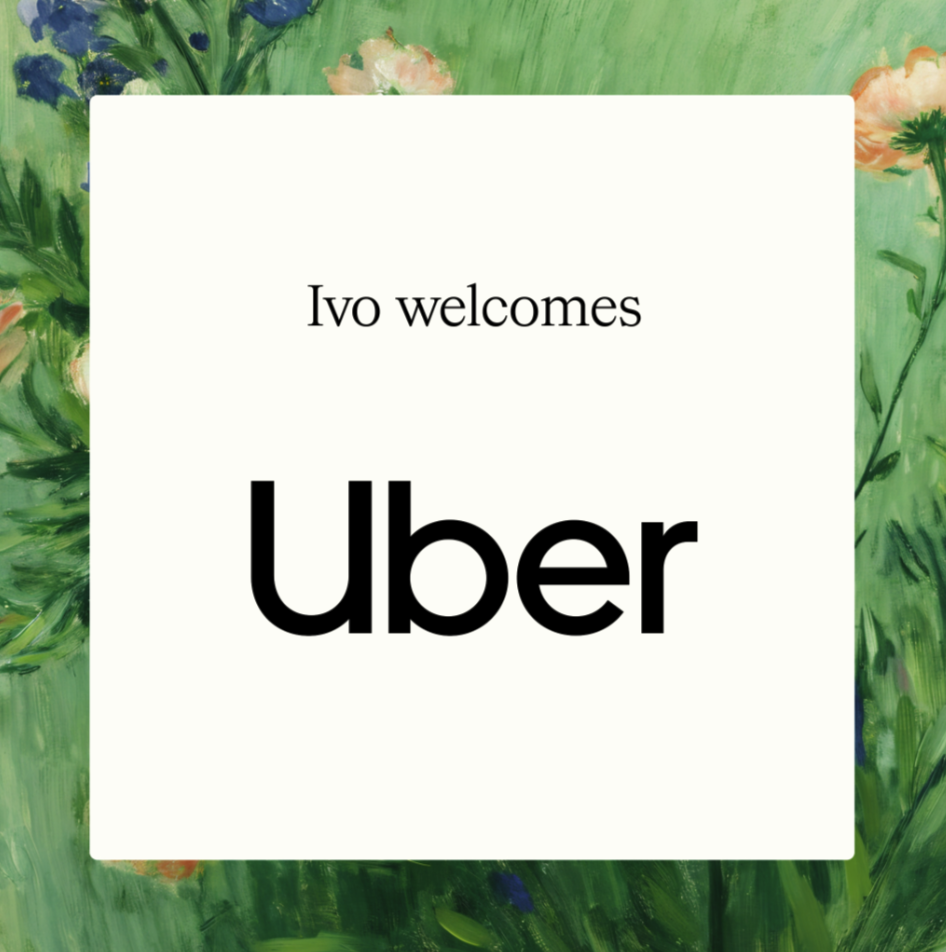At Ivo’s inaugural customer advisory board (“Visionaries Board”) meeting, legal leaders from top companies, including Canva, Pinterest, Intel471, and others, came together to discuss the future of legal AI.
The conversation covered everything from risk management and redlining to speeding up contract review and rethinking how legal teams maximize their value.
What became clear? AI isn’t about replacing lawyers—it’s about reducing the time spent in the tedium of contract review to enable lawyers to spend more time focusing on strategic initiatives that drive business forward.
Here’s a look at the top takeaways from the Visionary Board’s first session and what it means for legal teams navigating the AI-laden path ahead.
AI should complete tasks or eliminate them
The Visionaries Board emphasized that the goal behind implementing AI is not just efficiency, but the elimination of low-value work altogether.
One Visionary Board member specifically noted, "It’s not just about helping me do a task faster; I want to remove the task entirely."
Rather than manually reviewing every line of a contract, redlining a routine NDA, or triaging vendor forms, lawyers want AI to handle the full review and surface the provisions that pose the biggest risks or could impact strategic business outcomes. Some even imagine a future where traditional redlining fades away entirely, replaced by dynamic risk scoring that enables teams to act on priorities, not sift through edits.
Redlines are out. Risk scores are in.
A clause that scores 90% or higher on an acceptable risk framework? Route it to a junior reviewer. A liability cap significantly below the acceptable threshold? Escalate it to corporate counsel.
This shift in contract review processes could redefine how teams assess legal exposure and allocate time.
Experience shapes trust and adoption
How lawyers use AI varies widely. Junior lawyers may default to over-redlining to capture every nuance or demonstrate competency, while seasoned attorneys may be more apt to accept low-risk deviations to their playbook to expedite deals.
That’s where AI can help–by providing junior lawyers with the same institutional knowledge as their experienced peers, embedded in a standardized playbook. The goal isn’t just speed, but alignment and clarity.
One-size-fits-all doesn’t work for legal AI
Context matters. Style matters. No two companies—or legal teams—approach risk the same way. That’s why customization is key.
Visionary Board members emphasized the importance of tailoring AI solutions to reflect how their organizations already operate, such as fallback clauses by product, risk profiles by team, or stylistic playbooks by user.
At its best, legal AI isn’t generic; it’s purpose-built to mirror your unique approach to contracts, risk, and business goals.
It’s not just a tech challenge, it’s a psychological one
Visionary Board members also made it clear that the toughest part of legal transformation isn’t the adoption of the technology itself, but ensuring that it can co-exist with the judgment and reasoning that only legal teams and leaders can provide. Aligning stakeholders on definitions. Agreeing on risk thresholds. Positioning legal as a strategic partner, not a blocker.
AI can help support this shift by providing metrics, dashboards, and heat maps that highlight how legal contributes to efficiency, alignment, and risk mitigation—not just compliance.
But there are limits. Resoundingly, Visionary Board members agreed there are tasks AI shouldn’t do; it shouldn’t calibrate risk tolerance for business teams, navigate internal politics, or override human decisions. The role of AI is to enhance the legal team’s impact, not replace human judgment.
Advice for legal teams adopting AI
Whether you're exploring legal AI for the first time or scaling an existing implementation, here are five recommendations from the Visionaries Board to guide the way:
1. Start small, but smart. Focus on repetitive, low-risk tasks first, like NDAs or vendor reviews, and build trust with AI from there.
2. Codify your playbooks. The more clearly you define your preferred and fallback provisions and risk thresholds, the better AI can assist.
3. Invest in customization. Legal teams should control style, tone, and escalation logic, because risk isn’t one-size-fits-all.
4. Shift the metrics. Don’t just measure speed. Measure alignment with risk profiles, reduction in review cycles, and effectiveness.
5. Empower, don’t replace. Legal AI should enable attorneys to be more strategic, not take the human out of the loop. Think augmentation, not automation.
What’s next
The Ivo Visionaries Board meeting highlighted how collaborative and forward-thinking our members are. These legal leaders aren’t just giving feedback; they’re shaping the future of legal AI. From model design to workflow integration, the Visionary Board members' insights directly influence how we build Ivo. As AI advances, expectations are shifting, too, and tools like Ivo are on track to evolve into peer-level teammates.
The consensus was clear – AI should surface what matters and never override human judgment. Legal teams want to spend their time focusing on strategic outcomes and assessing risks, not tracking changes line by line. We're grateful to our Visionaries Board for pushing us to build Ivo with clarity, context, and real-world impact in mind.
At Ivo’s inaugural customer advisory board (“Visionaries Board”) meeting, legal leaders from top companies, including Canva, Pinterest, Intel471, and others, came together to discuss the future of legal AI.
The conversation covered everything from risk management and redlining to speeding up contract review and rethinking how legal teams maximize their value.
What became clear? AI isn’t about replacing lawyers—it’s about reducing the time spent in the tedium of contract review to enable lawyers to spend more time focusing on strategic initiatives that drive business forward.
Here’s a look at the top takeaways from the Visionary Board’s first session and what it means for legal teams navigating the AI-laden path ahead.
AI should complete tasks or eliminate them
The Visionaries Board emphasized that the goal behind implementing AI is not just efficiency, but the elimination of low-value work altogether.
One Visionary Board member specifically noted, "It’s not just about helping me do a task faster; I want to remove the task entirely."
Rather than manually reviewing every line of a contract, redlining a routine NDA, or triaging vendor forms, lawyers want AI to handle the full review and surface the provisions that pose the biggest risks or could impact strategic business outcomes. Some even imagine a future where traditional redlining fades away entirely, replaced by dynamic risk scoring that enables teams to act on priorities, not sift through edits.
Redlines are out. Risk scores are in.
A clause that scores 90% or higher on an acceptable risk framework? Route it to a junior reviewer. A liability cap significantly below the acceptable threshold? Escalate it to corporate counsel.
This shift in contract review processes could redefine how teams assess legal exposure and allocate time.
Experience shapes trust and adoption
How lawyers use AI varies widely. Junior lawyers may default to over-redlining to capture every nuance or demonstrate competency, while seasoned attorneys may be more apt to accept low-risk deviations to their playbook to expedite deals.
That’s where AI can help–by providing junior lawyers with the same institutional knowledge as their experienced peers, embedded in a standardized playbook. The goal isn’t just speed, but alignment and clarity.
One-size-fits-all doesn’t work for legal AI
Context matters. Style matters. No two companies—or legal teams—approach risk the same way. That’s why customization is key.
Visionary Board members emphasized the importance of tailoring AI solutions to reflect how their organizations already operate, such as fallback clauses by product, risk profiles by team, or stylistic playbooks by user.
At its best, legal AI isn’t generic; it’s purpose-built to mirror your unique approach to contracts, risk, and business goals.
It’s not just a tech challenge, it’s a psychological one
Visionary Board members also made it clear that the toughest part of legal transformation isn’t the adoption of the technology itself, but ensuring that it can co-exist with the judgment and reasoning that only legal teams and leaders can provide. Aligning stakeholders on definitions. Agreeing on risk thresholds. Positioning legal as a strategic partner, not a blocker.
AI can help support this shift by providing metrics, dashboards, and heat maps that highlight how legal contributes to efficiency, alignment, and risk mitigation—not just compliance.
But there are limits. Resoundingly, Visionary Board members agreed there are tasks AI shouldn’t do; it shouldn’t calibrate risk tolerance for business teams, navigate internal politics, or override human decisions. The role of AI is to enhance the legal team’s impact, not replace human judgment.
Advice for legal teams adopting AI
Whether you're exploring legal AI for the first time or scaling an existing implementation, here are five recommendations from the Visionaries Board to guide the way:
1. Start small, but smart. Focus on repetitive, low-risk tasks first, like NDAs or vendor reviews, and build trust with AI from there.
2. Codify your playbooks. The more clearly you define your preferred and fallback provisions and risk thresholds, the better AI can assist.
3. Invest in customization. Legal teams should control style, tone, and escalation logic, because risk isn’t one-size-fits-all.
4. Shift the metrics. Don’t just measure speed. Measure alignment with risk profiles, reduction in review cycles, and effectiveness.
5. Empower, don’t replace. Legal AI should enable attorneys to be more strategic, not take the human out of the loop. Think augmentation, not automation.
What’s next
The Ivo Visionaries Board meeting highlighted how collaborative and forward-thinking our members are. These legal leaders aren’t just giving feedback; they’re shaping the future of legal AI. From model design to workflow integration, the Visionary Board members' insights directly influence how we build Ivo. As AI advances, expectations are shifting, too, and tools like Ivo are on track to evolve into peer-level teammates.
The consensus was clear – AI should surface what matters and never override human judgment. Legal teams want to spend their time focusing on strategic outcomes and assessing risks, not tracking changes line by line. We're grateful to our Visionaries Board for pushing us to build Ivo with clarity, context, and real-world impact in mind.

























